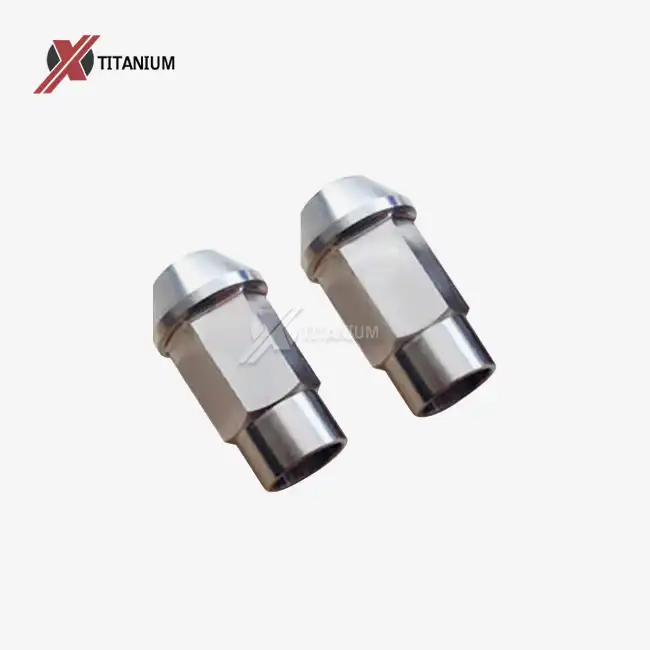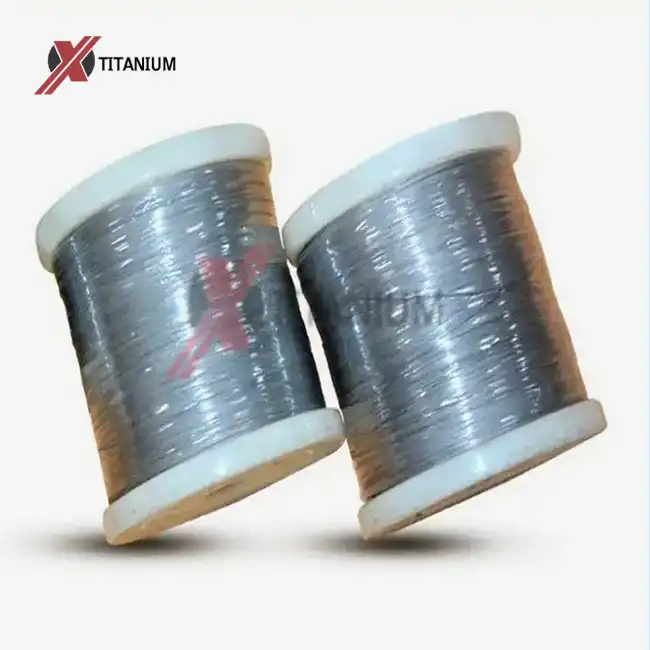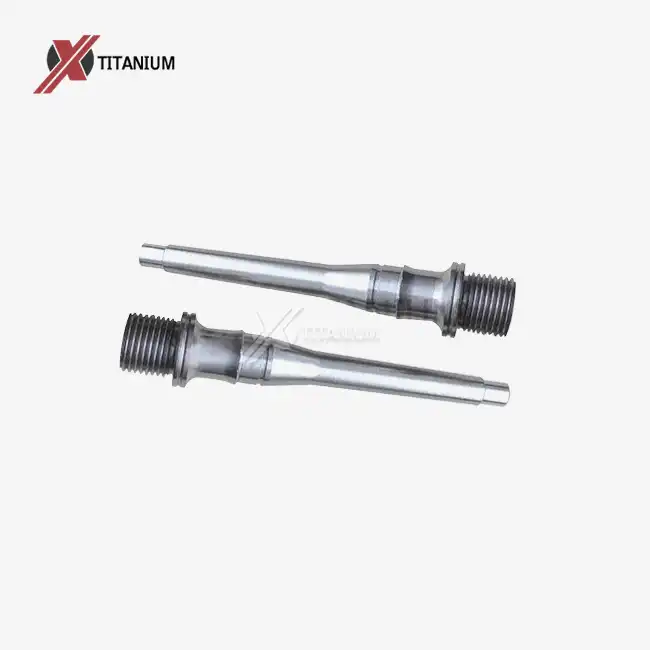Comprehending the Unique Properties of Titanium Bolts for Motorcycles
The Advantages of Titanium in Motorcycle Engineering
Titanium bolts have revolutionized motorcycle engineering, offering a perfect blend of strength and lightness. These high-performance fasteners boast an impressive strength-to-weight ratio, making them ideal for riders seeking to enhance their bike's performance without compromising structural integrity. Titanium's natural corrosion resistance adds another layer of appeal, ensuring longevity even in harsh riding conditions.
How Titanium Bolts Differ from Traditional Steel Fasteners?
Compared to their steel counterparts, titanium bolts for motorcycles exhibit unique characteristics that demand special attention. The material's lower modulus of elasticity means that titanium bolts stretch more under the same load, requiring different torque specifications. This elasticity also contributes to better vibration damping, a crucial factor in motorcycle performance and rider comfort.
The Impact of Titanium Bolts on Motorcycle Performance
The incorporation of titanium bolts motorcycle can significantly impact a motorcycle's overall performance. The weight reduction, albeit small per bolt, accumulates across the entire bike, leading to improved power-to-weight ratios. This translates to enhanced acceleration, better handling, and increased fuel efficiency. Moreover, the superior strength of titanium allows for the use of smaller diameter bolts in certain applications, further contributing to weight savings without compromising safety.
Best Practices for Installing and Maintaining Titanium Bolts on Your Motorcycle
Proper Installation Techniques for Titanium Fasteners
Installing titanium bolts on your motorcycle requires precision and care. Begin by thoroughly cleaning both the bolt and the threaded hole to remove any debris or old lubricant. Apply a thin layer of anti-galling compound specifically designed for titanium to prevent thread seizure. When inserting the bolt, start by hand to ensure proper alignment before using any tools. Use a calibrated torque wrench set to the manufacturer's specifications, as over-tightening can lead to bolt failure.
Maintenance Routines to Prolong the Life of Titanium Bolts
Regular maintenance is key to maximizing the lifespan of your titanium bolts. Establish a routine inspection schedule, checking for any signs of wear, corrosion, or loosening. Clean the bolts periodically with a mild soap solution and a soft brush, avoiding harsh chemicals that could damage the titanium's protective oxide layer. If you notice any discoloration or surface changes, consult with a professional to determine if replacement is necessary.
Common Mistakes to Avoid When Working with Titanium Motorcycle Bolts
Even experienced riders can make mistakes when dealing with titanium bolts motorcycle. Avoid using standard steel tools, as they can transfer particles to the titanium surface, potentially leading to galvanic corrosion. Never substitute titanium bolts with steel ones without proper engineering consideration, as this can affect the bike's designed performance characteristics. Lastly, resist the temptation to reuse titanium bolts in critical areas after removal, as their unique properties can change after initial installation.
Advanced Considerations for Titanium Bolt Usage in High-Performance Motorcycles
Selecting the Right Titanium Grade for Your Motorcycle's Needs
Not all titanium is created equal, and choosing the right grade is crucial for optimal performance. Grade 5 titanium (Ti-6Al-4V) is commonly used in motorcycle applications due to its excellent strength-to-weight ratio and fatigue resistance. However, for specialized applications, such as exhaust systems exposed to extreme temperatures, other alloys like Grade 9 (Ti-3Al-2.5V) might be more suitable. Consult with experts or the motorcycle manufacturer to ensure you're selecting the appropriate titanium grade for each specific application on your bike.
Integrating Titanium Bolts into Your Motorcycle's Upgrade Strategy
Incorporating titanium bolts motorcycle into your motorcycle should be part of a comprehensive upgrade strategy. Start by identifying critical areas where weight reduction and strength are most beneficial, such as the engine mounts, suspension components, and fairing attachments. Gradually replace steel bolts with titanium equivalents, keeping detailed records of each change. This systematic approach allows you to assess the cumulative impact on your motorcycle's performance and handling characteristics over time.
The Future of Titanium Fastener Technology in Motorcycle Design
The motorcycle industry continues to push the boundaries of performance, and titanium fastener technology is evolving to meet these demands. Emerging trends include the development of hybrid titanium alloys with enhanced properties, nano-structured titanium for even greater strength, and advanced coating technologies to further improve wear resistance. As manufacturers strive for ever-lighter and more powerful motorcycles, the role of titanium bolts in achieving these goals is likely to become even more prominent in future designs.
Conclusion
Mastering the use of titanium bolts motorcycle on your motorcycle can significantly enhance its performance, durability, and overall riding experience. By understanding their unique properties, following best practices for installation and maintenance, and staying informed about advancements in titanium fastener technology, you can operate your motorcycle like a true professional. Remember, the key to success lies in attention to detail and a commitment to continuous learning and improvement.
For more information on high-quality titanium bolts for your motorcycle, or to explore our range of titanium products, please don't hesitate to contact us at info@cltifastener.com or djy6580@aliyun.com. Our team of experts is always ready to assist you in finding the perfect titanium solutions for your specific needs.




_1747726553514.webp)